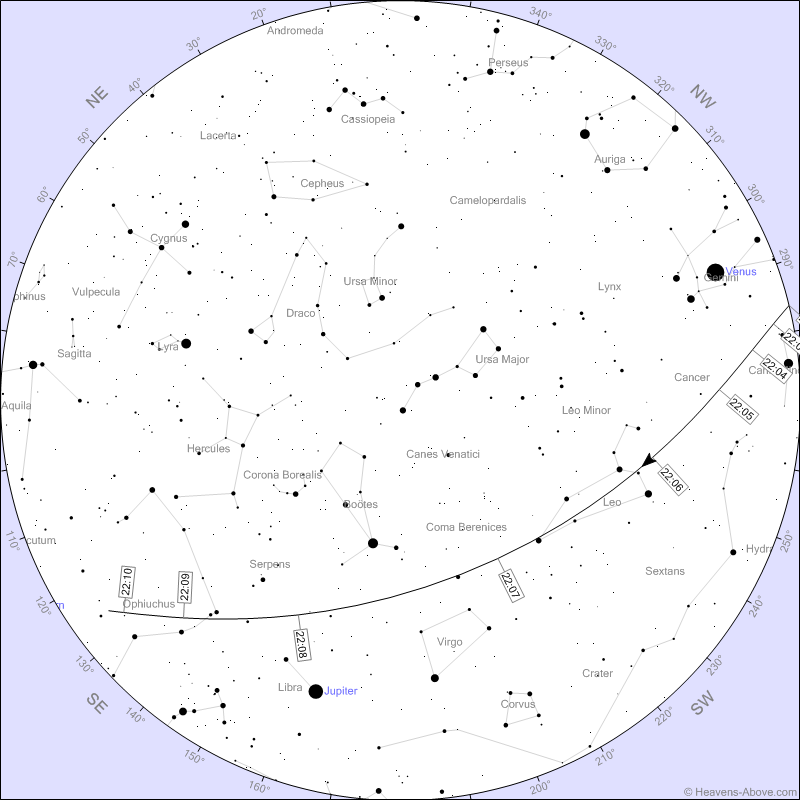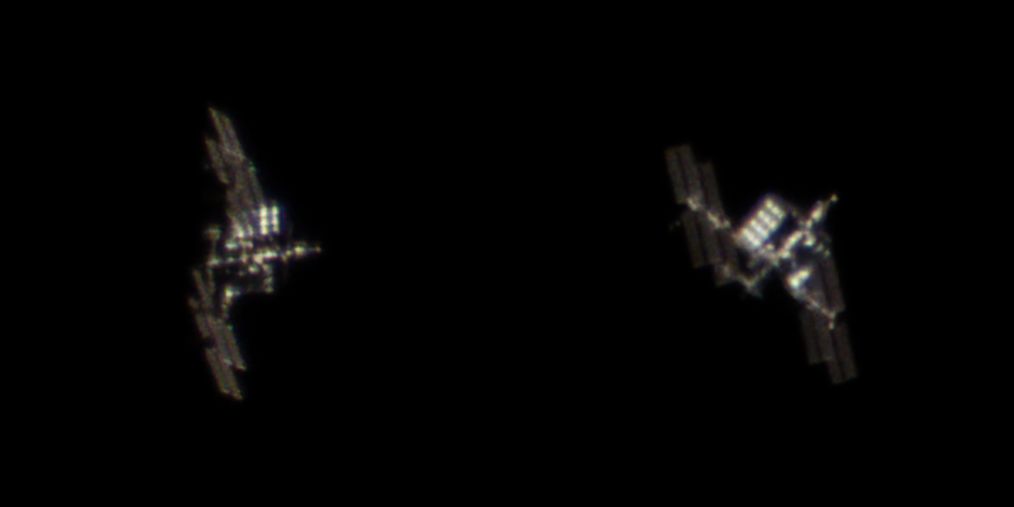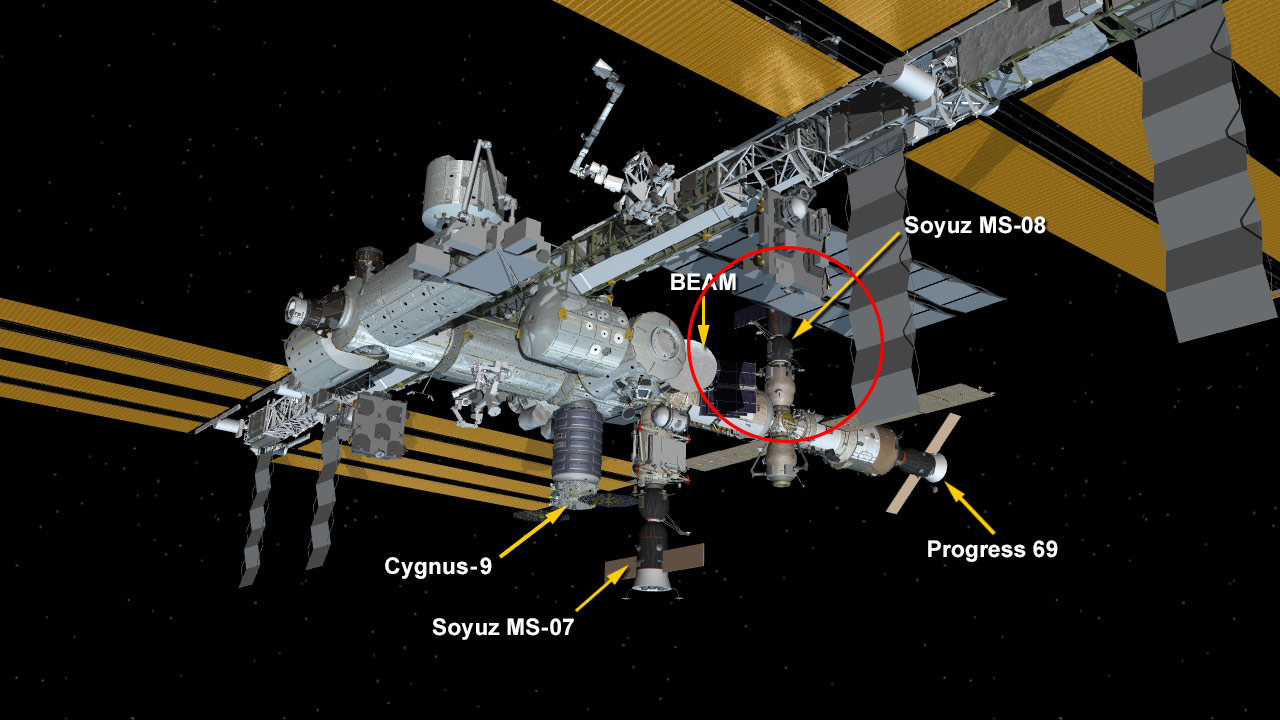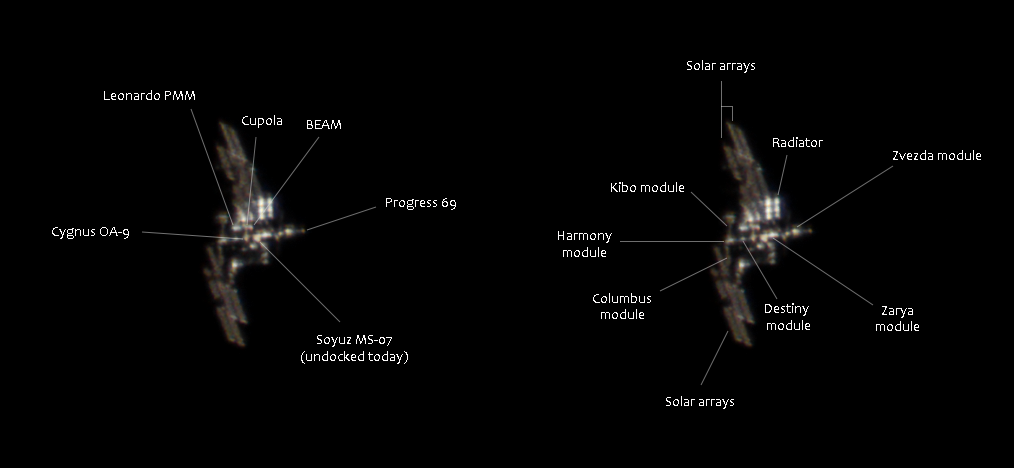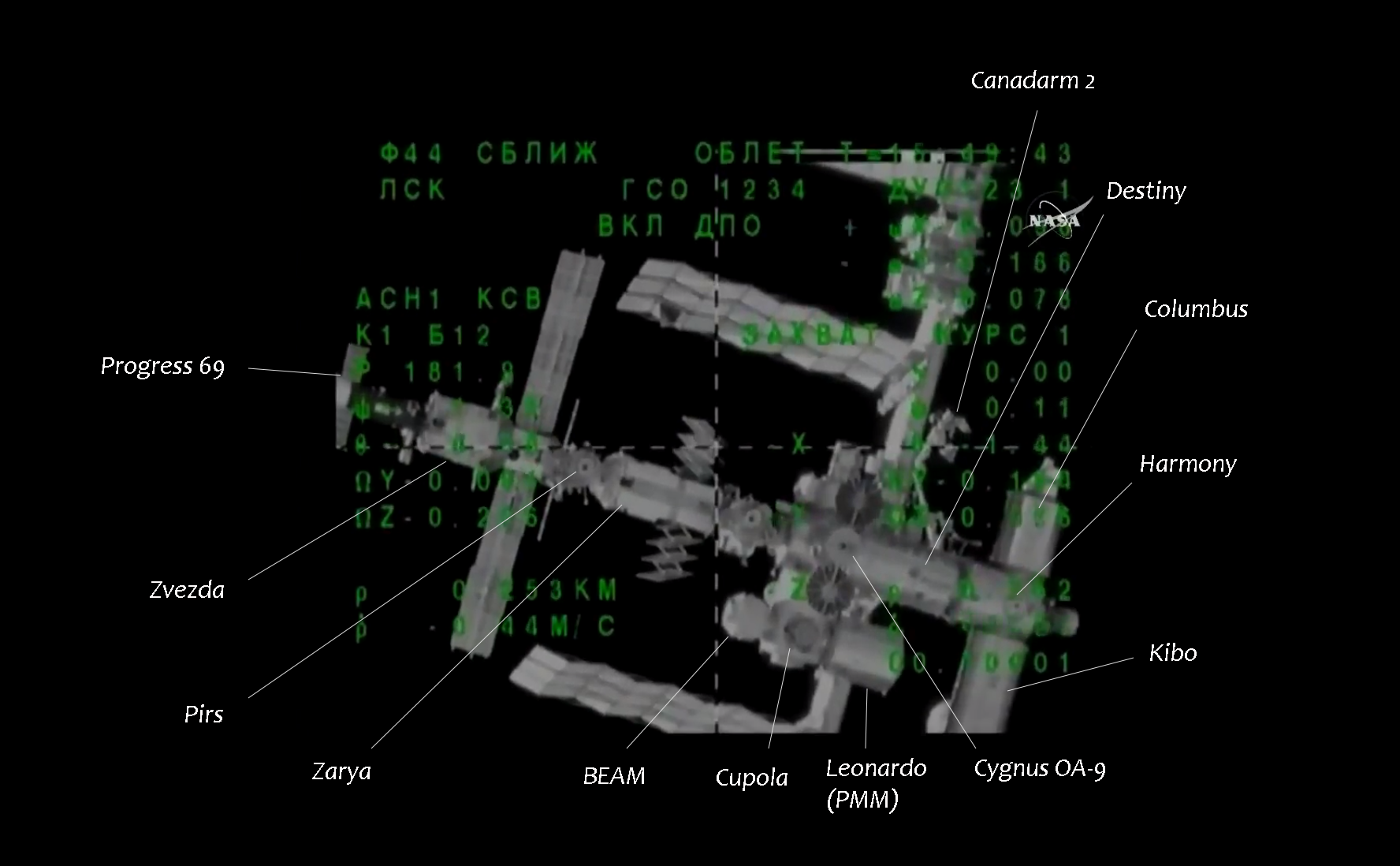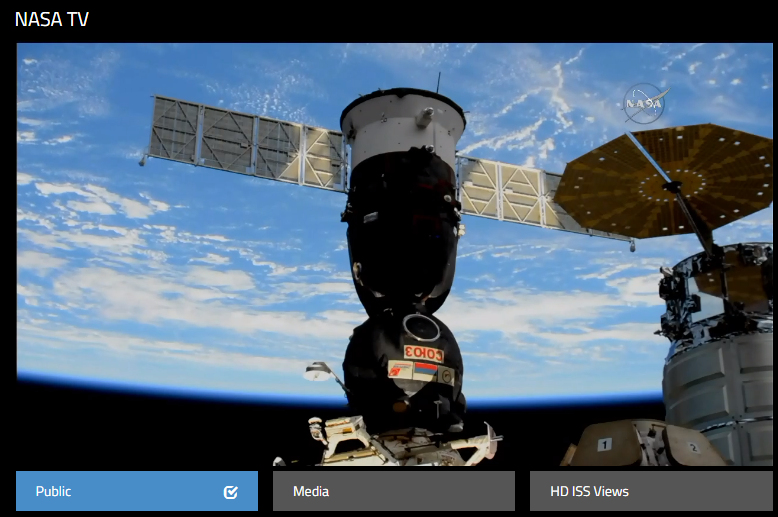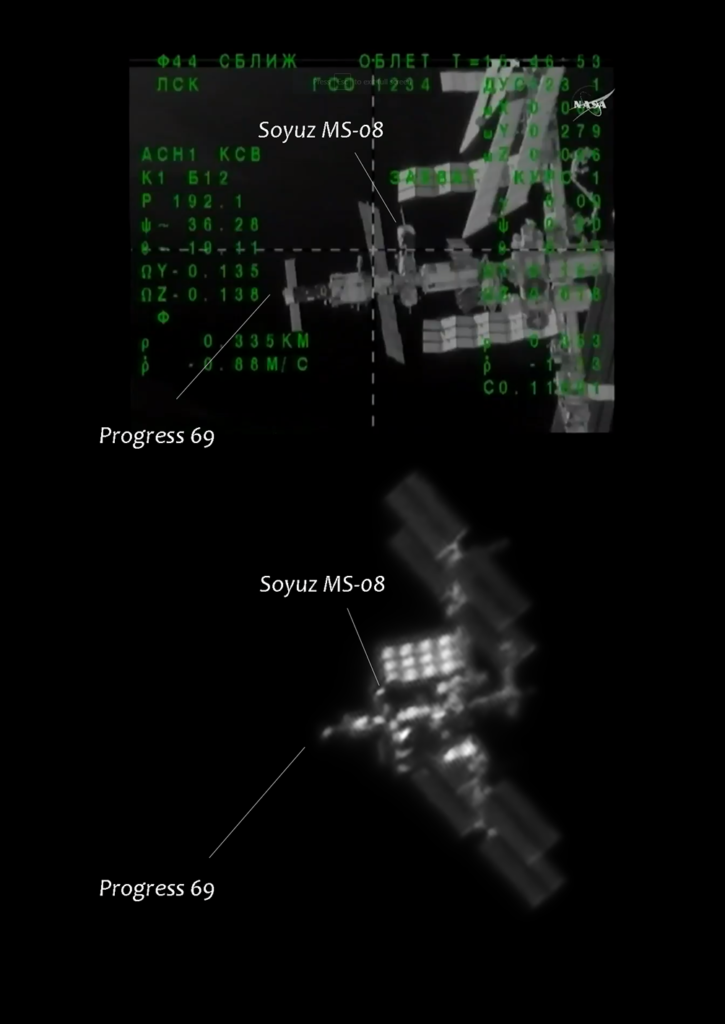Posted by: Szabolcs Nagy
Comments:0
International Space Station and Soyuz MS-08 at far side
Spacecraft on the far side of ISS – namely the Soyuz MS-08. Wait up, what??!! Spacecraft on the “far side” of the station? Yes…. but let’s start from the beginning.
Every ISS flyby photography begins with a bit of reading. I take a look at the predictions (which you can find in Guide to find ISS section) which contain extremely useful information about the brightness, maximum elevation, duration of the pass and its path in the night sky. This way I can prepare myself and the equipment to maximise success.
These are the best frames from that evening.
I think the best way to show people how much can be done with MANUAL tracking is if all the visible details are highlighted on photos. I usually use NASA’s ISS Blog to find out which spacecrafts are berthed (docked) to the space station. This is the picture showing the current situation at the time of my imaging session.
So what was that thing with Soyuz MS-08 on the far side? And what is Soyuz exactly?
Well currently the only way for astronauts to and from the station is to ride on a Soyuz spacecraft. It can take three astronauts safely to space and back. This is what it looks like from the ISS.
I have never ever spotted spacecrafts docked to the “far side” of the International Space Station before. Far side means not the one facing toward Earth, where the Cupola is. We are talking about the other side, the one facing toward space.
When Soyuz MS-09 arrived to the station I was watching the live coverage online. That footage gave me the idea to actually look at my frames properly. When I found these frames in the live coverage compared to mine, suddenly I started seeing Soyuz MS-08. The animation I have made helped me enormously to see the ISS in 3D and eventually identify this tiny spacecraft – a black cylindrical shape object with a bright blob on its top.
During an ISS flyby I am busy moving the telescope for accurate tracking of the station, so I do not have time to look at the laptop screen. Initially I do not have too much information about the precise orientation of the station on my shots. Even though I have been taking ISS close-ups for years now, usually I still need quite some time to thoroughly analyse all the good sharp frames and to identify all the visible objects on them – I only hope correctly.
The relatively low 50° maximum elevation of the station gave such an angle that we are actually looking at ISS from sideways instead of upwards.
Equipment:
Skywatcher 250/1200 Flextube dobson
ASI224MC colour camera
TeleVue 2.5x powermate
MANUAL tracking
02/06/2018
